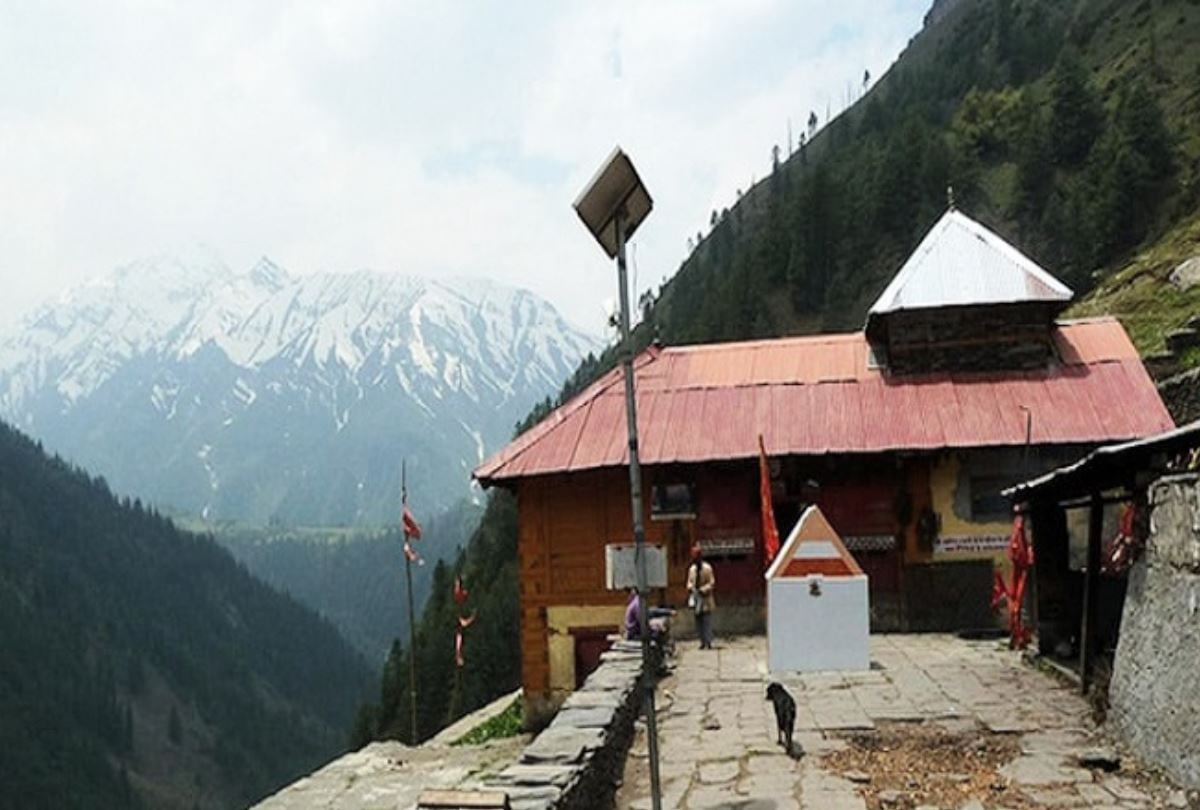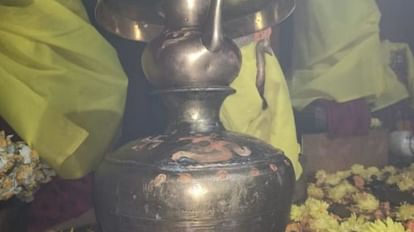I was just walking through some documents I had saved over the years, when it struck me that there has been very little new research work or relook into the history of the hill states. One particular format has been the examination of oral ballads, very few of which seem to be available in popular culture today. However, that was certainly not the case in the British era, when much field work seems to have been done by scholars of Europe on the subject, as they panned across the state of the Lahore kingdom and their adjunct territories. Sirmour was a Small Princely state along the Yamuna river's course While their purpose may have been malevolent in nature, many interesting insights got captured over the course of their work, and replication or improvement on the same seems to be rather scarce, especially in the context of what the European scholars used to call the "Punjab Hill States". One such case was on Sirmour, where very little information can be found in the publi...
It has been years since I had written the original piece on the practice of Skanda worship being rather prevalent in and around North-west India. Since then, I also found a few updates that I felt were rather interesting and unique, and added to the depth of the piece. (special thanks to Aditya Sharma for somevital information shared here today).
Vayu Purana and its Linkage to Balak Nath?
 |
| Vigraha of Baba Balak Nath at Deotsidh |
The Vayu Purana gives us some hints about the origins and links of the worship of Baba Balak Nath. A shloka in the Vayu Purana (chapter 54) clearly goes as follows
पप्रच्छ कार्तिकेयं वै मयूरवर्वाहनम् । महिशसुरनारीणां नयनाञ्जनतस्करम् महासेन महात्मानं मेघस्त्नित्निस्वनम् । उमामनःप्रहर्शेण बालकं छद्मरुपिणम् ....
The section is essentially a discussion between the Sage Vashishtha and Kartikeya, where Vayu Deva calls Kartikeya one who has the form of a child which delights Uma, who incidentally is also known as Skanda Mata.
Balak Nath is known as Bala Jogi, and of course, he is said to have referred to himself as Skanda of Satyuga. In this, the particular story of Baba Balak Nath's previous avatars becomes extremely interesting.
It is believed about Baba Balak Nath that he takes birth in every age (yug). He appeared as "Skand" in Satyug, as "Kaul" in Treta and as "Mahakaul" in Dwapar. In Dwapar age Baba Balak Nath was in the way to Kailash Dham with a wish to meet Lord Shiva. In the way he met with an old lady. The lady asked him where he is going. Then Baba Balak Nath who was Mahakaul told her that he is praying Lord Shiva since last three births but he had not been blessed by Lord Shiva with his appearance and so he was moving towards Kailash Dham with this very wish. The old lady told Baba that it was not easy to have a live appearance of Lord Shiva. You have to do something extraordinary. When Baba asked her what he should do,she told that Baba should stand in the foothills of the Kailash near Man Sarovar and pray there. Mata Parwati used to come there on some occasions for bath. When Mata Parwati comes there he should pray her to fulfill her wish. Mata Parwati will surely try to give him something else but he should insist on his wish only. Baba Balak Nath stood for twelve gharis with the old lady and moved towards the Man Sarovar. He did the same as the old lady had advised him and finally Lord Shiva was pleased and blessed him to be Paramsidh in the Kaliyug and will remain as Balak (young) and age would not affect him.
One must note how the reference to Kailash, Shiva and Uma remains consistent in one form or the other. Further, Baba Balak Nath visits Bacchetru Mahadev in Kurukshetra. This assumes even more significance, given how Pehowa houses a Kartikeya temple where people also go after completing the pind daan.
Another important and remarkable comparison is in the stories of RatniMai and Avvaiyyar. In the Balak Nath tradition, RatniMai is the old woman who guided Mahakaul. As the story goes:
Babaji took the most inconvenient work of RatniMai ,that was cow-grazing.
Babaji made his shelter below a Banyan Tree. He told RatniMai he would meditate below Banyan Tree and graze the cows side by side. He asked her to leave the bread and "Lassi" for him there for taking after meditation. Babaji committed with RatniMai to work for her as long she would remain satisfied. Everything remained smooth till twelve years. People started complaining the damage to crop field by the cows by the end of 12th year. RatniMai used to ignore such complaints but the complaint of village headman broke the patience of RatniMai and she started rebuking Babaji. So BabaJi took RatniMai and vilage headman to the field and miraculously there was no damage to the crops at all. Everybody was awestruck by this miracle. Babaji came back to his place of worship and asked RatniMai to take back her cows and let him go his way. RatniMai out of motherly affection tried to persuade BabaJi to stay back and reminded him about her providing bread and Lassi for 12 years.
Babaji responded that it had been coincidental and further affirmed that he had kept all the bread and Lassi safely as he never consumed them. By saying that BabaJi threw his "Chimata" on the stem of banyan tree and the breads supplied for 12 years came out. He further struck the same "Chimata" on the earth and a spring of Lassi started coming out taking the shape of a pond and the place came to be known as "Shaha Talai".
Babaji made his shelter below a Banyan Tree. He told RatniMai he would meditate below Banyan Tree and graze the cows side by side. He asked her to leave the bread and "Lassi" for him there for taking after meditation. Babaji committed with RatniMai to work for her as long she would remain satisfied. Everything remained smooth till twelve years. People started complaining the damage to crop field by the cows by the end of 12th year. RatniMai used to ignore such complaints but the complaint of village headman broke the patience of RatniMai and she started rebuking Babaji. So BabaJi took RatniMai and vilage headman to the field and miraculously there was no damage to the crops at all. Everybody was awestruck by this miracle. Babaji came back to his place of worship and asked RatniMai to take back her cows and let him go his way. RatniMai out of motherly affection tried to persuade BabaJi to stay back and reminded him about her providing bread and Lassi for 12 years.
Babaji responded that it had been coincidental and further affirmed that he had kept all the bread and Lassi safely as he never consumed them. By saying that BabaJi threw his "Chimata" on the stem of banyan tree and the breads supplied for 12 years came out. He further struck the same "Chimata" on the earth and a spring of Lassi started coming out taking the shape of a pond and the place came to be known as "Shaha Talai".
Compare this with this story talking about an interaction between Lord Murugan and the devotional poetess Avvaiyyar now:
Once, weary with hunger and thirst, Avvaiyar stood under a jamun tree. Lord Muruga, as a shepherd, sat on its branches. Avvaiyar asked him to shake the tree and give her some fruits. He asked her whether she wanted ‘sutta pazham’ or ‘sudaatha pazham’. The wise old lady did not understand. She asked him to give her ‘sutta pazham’. There was a shower of ripe jamuns. As Avvaiyar picked them, she blew on the fruits to remove the mud. The shepherd laughed and said, “Grandma! Are the fruits so hot that you are blowing on them?” Avvaiyar was stunned. She realised she had become complacent. Here was a boy who taught her the difference between ‘sutta pazham’ and ‘sudaatha pazham’. As she looked up, she saw a smiling Muruga in all his glory.
Clearly, there are many intersections of the worship of Skanda that carry on in the Balak Nath worship. The interested scholar may want to go further and examine this in greater detail as an academic exercise hopefully.
Chamba's Old Associations with Kartik Swami
Chamba's antiquity is perhaps one of the oldest in the region, and definitely needs much more interest and research work. One of the temples in the region that has local fame. The Kartik Swami temple of Bharmour district traces its origins back to antiquity. Located in the last village of Chamba that goes by the name Kugti, the temple is also a pilgrim spot among Hindu-Buddhists of Lahaul, who cross over for a yatra of their own as well. Locally, Kartikeya is known as Kelang Wazir , whose temple can also be found in Keylong. The temple sees many Gaddis undertake annual pilgrim. It is said that the Gaddi nomads would take permission from Lord Kartik and Marali Mata to cross the Kugti pass.
 |
| Keylang Wazir Temple in Kugti (courtesy Arvind Thakur of Amar Ujala) |
The temple has interesting traditions associated with it to predict the coming year. The temple closes on 30 November annually, and then opens up on Baisakhi after 136 days. At that time, a gadvi (गड़वी), a narrow mouthed water pot, is filled up with water and then placed in the garba griha in front of the vigraha of Kartikeya Swami. On the day of Baisakhi, when the temple is opened and the water level of the gadvi examined. Based on the level of the water in it, the prediction for the rainfall for the year is announced. If the water level remains unchanged, good rainfall is predicted for the year. However, if the water level has halved, less than normal rainfall is predicted, and if the gadvi is empty, a drought is predicted.
 |
| Gadvi of the Temple (courtesy Amar Ujala's Arvind Thakur) |
Comments
Post a Comment